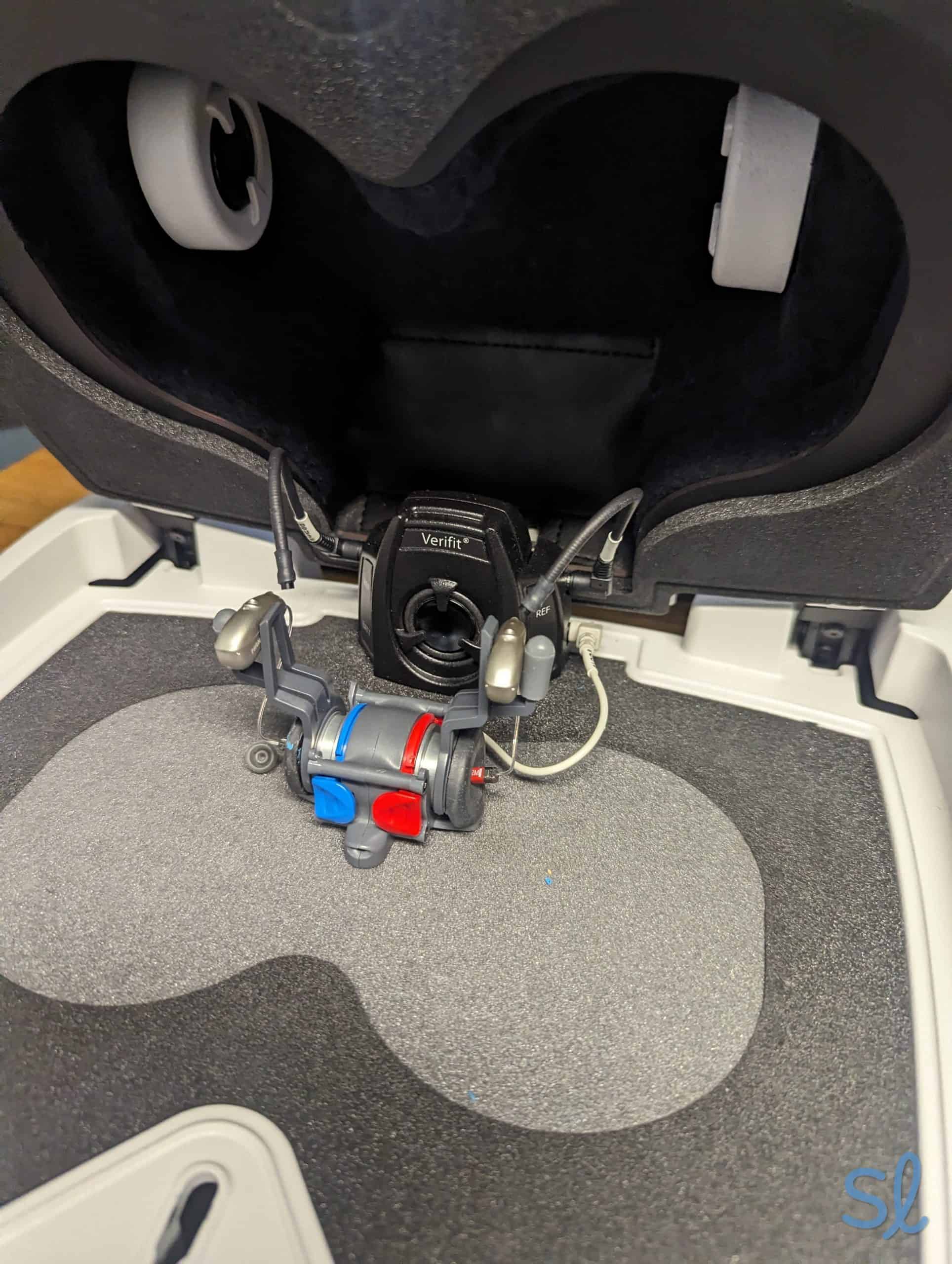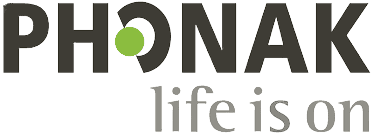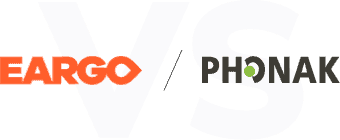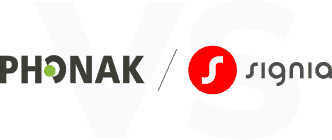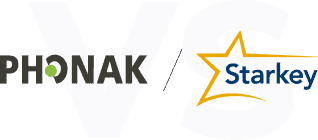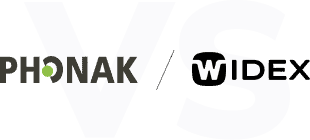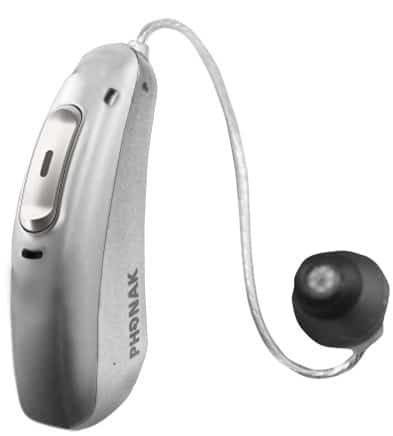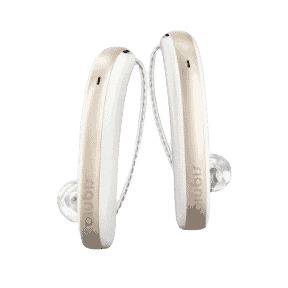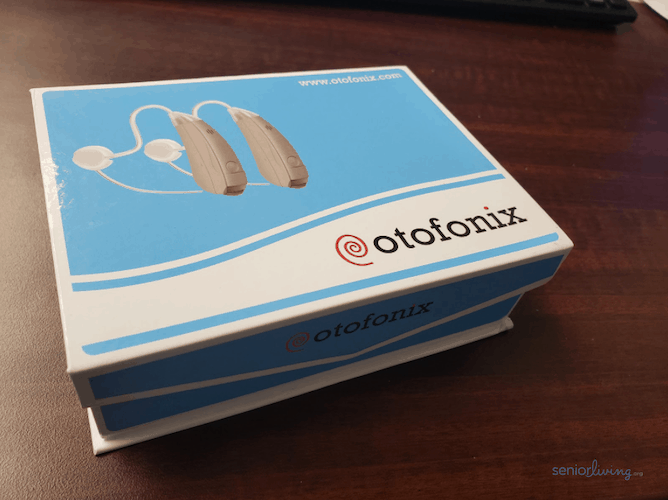Phonak Hearing Aid Reviews
Phonak offers some of the best prescription solutions for mild to profound hearing loss.
How We Tested Phonak
Our team of technology specialists thoroughly examined Phonak hearing aids, dedicating over 50 hours to hands-on testing. We assessed various factors, including user-friendliness, comfort, pricing and battery performance. Our team also consulted with resident audiologist Dr. Brad Ingrao to learn about his experience with Phonak. Below is a detailed breakdown of the key aspects we evaluated.
- Cost and overall value: Recognizing that many seniors manage their expenses on a fixed income, we analyzed the pricing of various Phonak hearing aids and compared them to similar brands. We also considered whether the company provides a trial period, the trial’s duration and the specifics of its return policy.
- Audio performance and sound quality: We assessed each device’s ability to deliver clear speech, reduce background noise and enhance listening with directional microphones. We also examined whether the hearing aids minimize feedback for a more seamless user experience.
- Connectivity and features: We evaluated Bluetooth compatibility, integration with a companion app and whether devices operate on rechargeable or traditional battery power. We also assessed the user-friendliness of built-in controls.
- Wearability and fit: We reviewed BTE, RIC and ITE models, examining their design, size and weight, customizability for everyday and all-day use, and whether the devices were waterproof.
Switzerland-based Phonak has a reputation as one of the best hearing aid providers. It has been in the industry for over 75 years, and it offers a wide range of hearing aid products in more than 100 countries. The company caters to people with mild to profound hearing loss, offering a product lineup of behind-the-ear (BTE), in-the-ear (ITE) and receiver-in-canal (RIC) models, as well as devices for single-sided hearing loss.
Among Phonak’s models are the powerful Naida Lumity line of BTE hearing aids and the completely invisible, extended-wear Lyric. I also find the Audeo Lumity RIC hearing aid versatile, since it comes with rechargeable and disposable battery options.
One of the things I like most about Audeo Lumity is its dual use as a health data tracker. Lumity has also been trained with AI-based machine learning that automatically identifies and adjusts to almost every sound environment you may find yourself in. See our hearing aid buyers guide for more on why this is important. This review will explain my experience testing Phonak and some of their top hearing aid models. Let’s get into it!
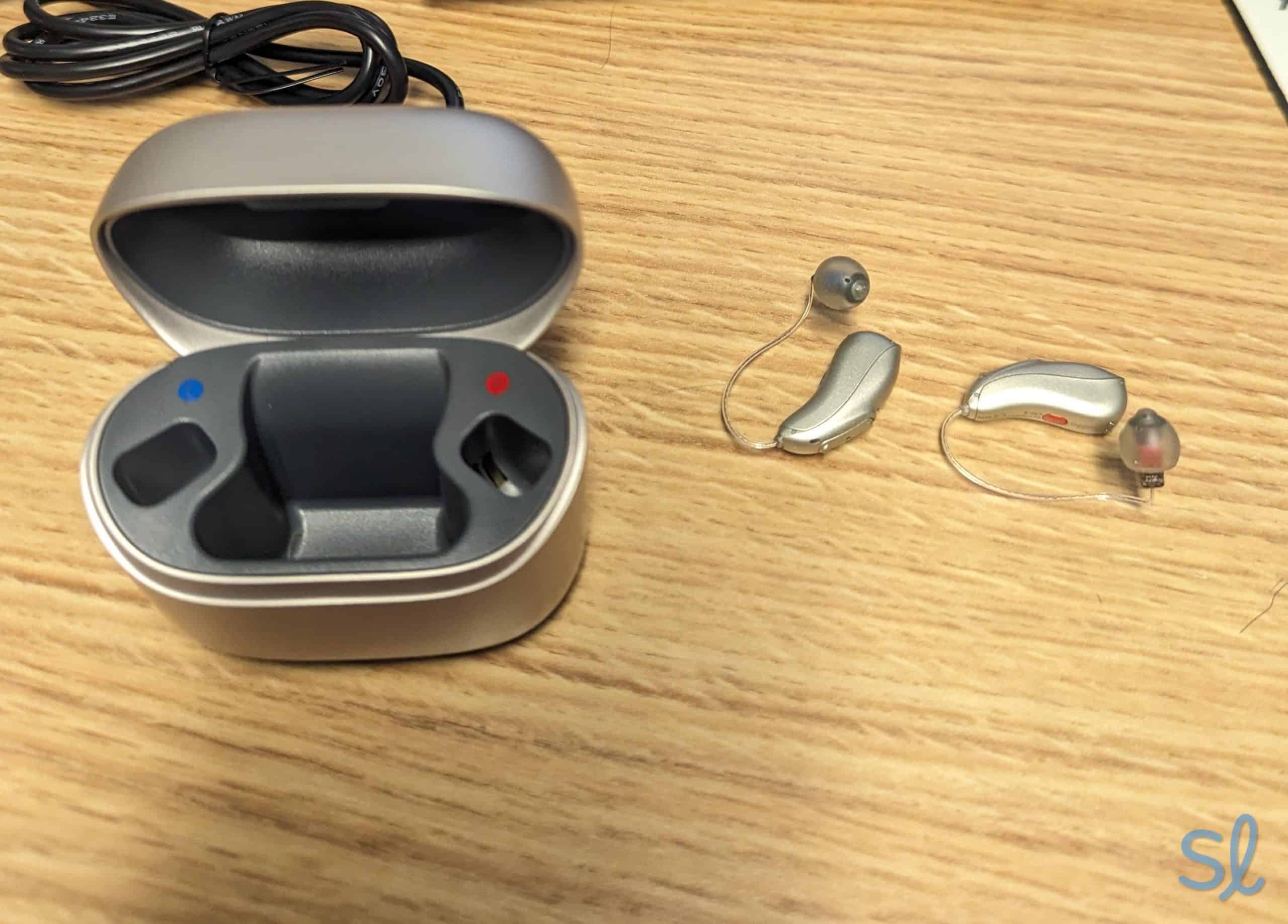
Testing out Phonak hearing aids

Our Top Alternatives to Phonak
Phonak has evolved substantially over the years, expanding its basic features to include rechargeable batteries, direct streaming to mobile devices and synchronized control between two hearing aids. Quality, however, comes at a price. Phonak is not the cheapest option. If Phonak feels too expensive for your budget and you want to find a more affordable option, check out some of the best alternatives we have reviewed.
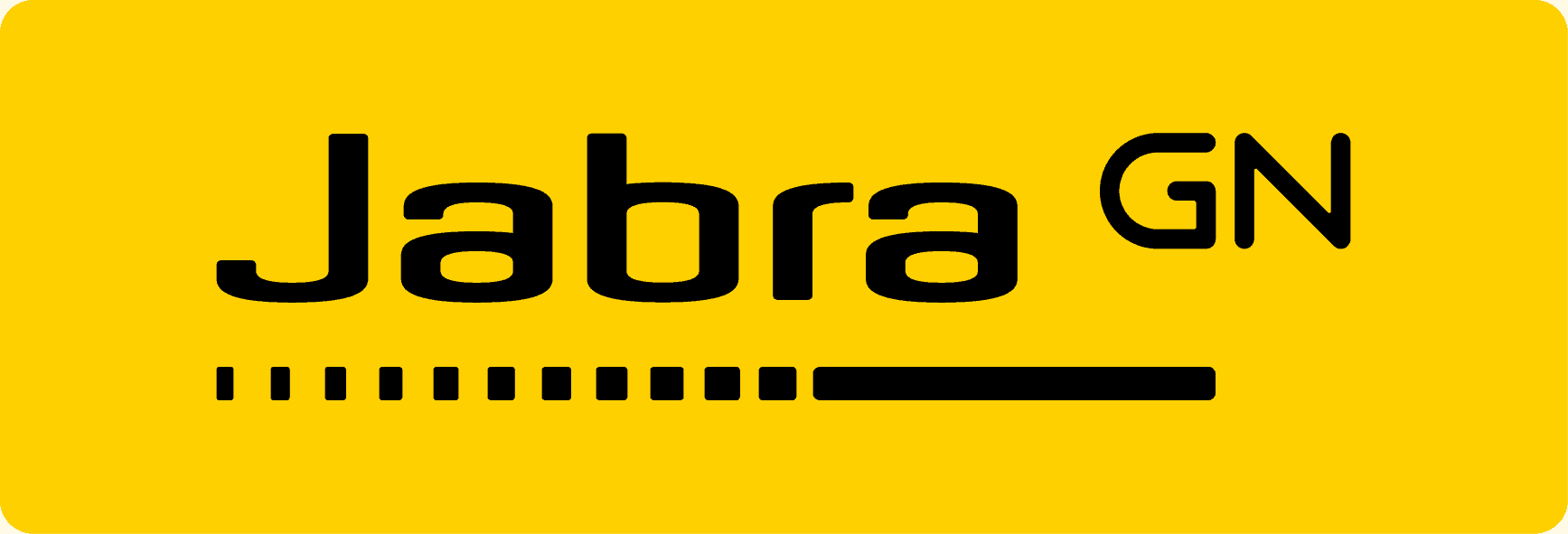
Lumity Technology
Phonak has long been an innovator in hearing technology, and the company’s Lumity technology represents a leap forward in user experience. Phonak pioneered utilizing directional microphone technology to help users separate the speech they want to hear from distracting background noise.

Some of Phonak’s other key features include:
- Lithium-ion rechargeable batteries
- Integrated Roger receivers in some models
- Direct streaming to both Apple (iOS) and Android devices
- AirStreamTM technology for TV and audio streaming
Did You Know? About 28 million Americans ages 50 or older have hearing loss, but only 1 in 7 uses hearing aids.1
Not new, but significant:
Binaural VoiceStream Technology allows the two hearing aids to exchange information. It allows for convenience features such as synchronized volume and program control (adjusting one hearing aid makes the identical change on the other side).
More importantly for communication, the feature allows the hearing aids to determine which ear has more speech and then copy that cleaner signal to the other hearing aid. It reduces the adverse effects of background noise (Speech in Loud Noise), wind (WindBlock) and reverberant rooms (EchoBlock). Some of the features are available only in higher technology levels, but the basics of synchronized controls are available across levels.
Beyond microphones, Phonak also uses AI in some of their newer devices. The AI and deep neural network (DNN) separate vocals from background noise, allowing wearers to better understand those speaking to them. They call it Spheric Speech Clarity. Demos can be requested on the Phonak website.
Did You Know? Roger wireless microphones reduce background noise and transmit speech directly to your hearing aids or implants, ensuring clear conversations even in loud environments. They are compatible with most hearing aids and cochlear implants with direct audio input or telecoil.
Lumity Models
Lumity is available in several styles and models, along with a special series exclusively for kids called Sky. Lumity Sky BTE hearing aids utilize Phonak’s cutting-edge SmartSpeech technology to identify and prioritize speech clarity and understanding. Like every Lumity hearing aid, they reduce listening effort, so your child can focus on their environment instead of their hearing. They have a tamper-proof design and are water- and dust-resistant. They’re Bluetooth-enabled and come in lots of cool, kid-friendly colors.
FYI: Phonak offers other hearing aids outside the Lumity family, but we’ll focus on Lumity for this review.
The Audéo Lumity RIC and Naida Lumity BTE versions are available with traditional zinc-air or rechargeable batteries.
Here's a quick look at some of Lumity’s form factors.
| Audéo Lumity RIC | Key features and benefits |
|---|---|
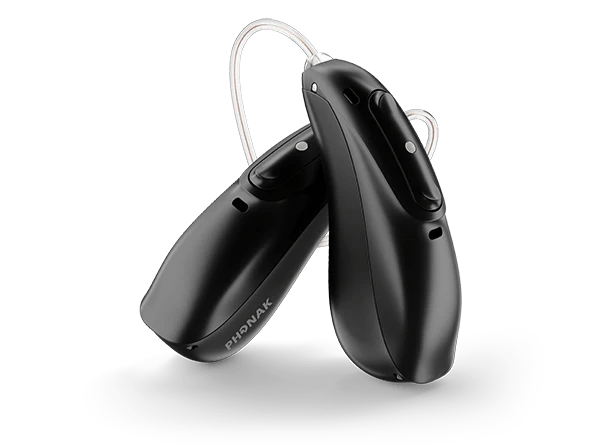
Audéo Lumity Receiver in the Canal |
|
| Naida Lumity BTE | Key features and benefits |
|---|---|
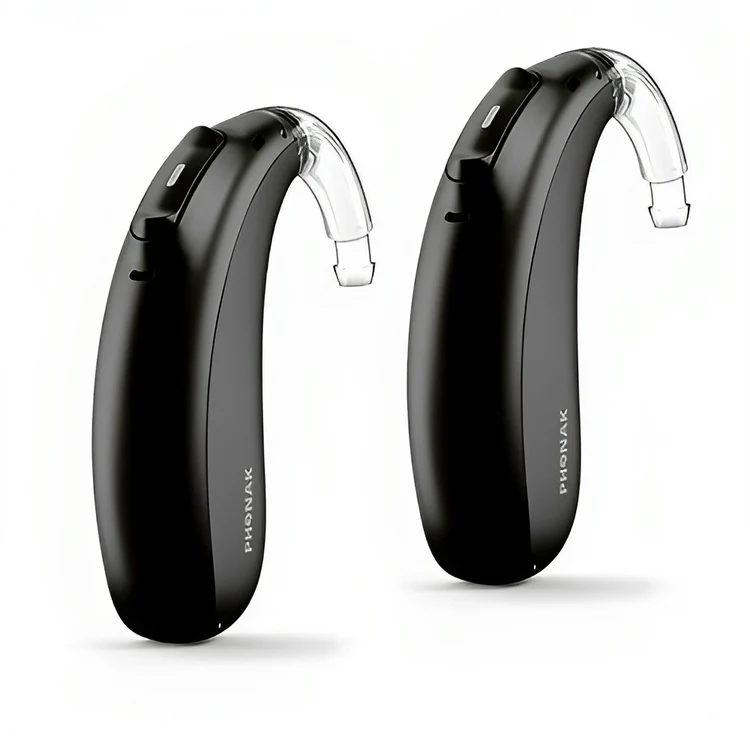
Naida Lumity Behind the Ear (BTE) |
|
| Sky Lumity BTE | Key features and benefits |
|---|---|
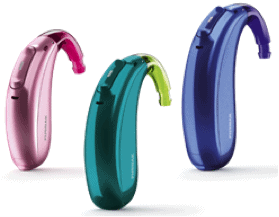 |
|
Did You Know? There is also CROS Lumity for single-sided deafness and Life Lumity, the second generation of the world’s first waterproof rechargeable hearing aid.
Pricing and Technology Levels
Phonak offers Lumity in four technology levels designed to match the needs of users' lifestyles. Below are my thoughts on each. Phonak prices are nearly impossible to cite because of varying geographic availability. Depending on the technology level and location, you can expect hearing aid prices to range from $1,200–$4,800 per instrument.
“Essential” devices (Lumity 30) are solid for many people on tight budgets. I see two distinct use cases for this technology level. The one often promoted by the industry is for the stay-at-home patient with mundane listening needs. I've had some of these in my practice, but the number of folks who never or rarely venture into challenging listening environments is minuscule.
On the other hand, plenty have great difficulty with background noise and reverberation and can't fork over $3,000 or more per ear for hearing aids. In this case, I use the system approach, in which we add extra accessories to help improve hearing. Even an Essential-level product will work well in quiet settings. Coupled with a decent remote microphone like the Phonak Roger Select or a simpler solution like enabling a Telecoil for a looped house of worship, the user gets much more bang for their buck.
“Standard” products (Lumity 50) add a few more convenience features, such as the ability to hear a phone call in both ears (DuoPhone) and a few more channels for me to adjust (12 versus eight in the Essential). This level also adds more ability to separate speech from background noise, called SNR boost. In clinical practice, this little bit helped enough people that I usually dropped the Essential level and adjusted my markup to make the Standard product the entry level. These also work well in the system approach.
Did You Know? For seniors with hearing loss, wearing hearing aids can reduce the risk of falling by half — and by even more if you use your hearing aids at least four hours a day.3
“Advanced” hearing aids (Lumity 70) start using the binaural VoiceStream features by adding WindBlock, NoiseBlock and an exceptionally fast-acting reduction called SoundRelax for sharp, loud sounds such as slamming doors. The channels increase from 12 to 16, and the price follows suit.
“Premium” devices (Lumity 90) have 20 channels and add EchoBlock to the Lumity 70 feature set. The price increases, but it's always been hard to measure significant differences in my patients with this feature. Some people like to have top-of-the-line products and can pay for them, though, so this level usually sells quite well in more affluent markets.
If you are a veteran eligible for general VA medical care, you are eligible for premium-level hearing aids from Phonak at no cost. The same holds for five other notable manufacturers. Also, you are eligible for any needed accessories, such as Roger microphones and media streamers. You do not need a service connection for hearing. All you need to do is report to a VA medical center with audiology and establish eligibility.
You don't need a primary-care physician or referral. They will complete a means test, and if your income is over a certain level, there may be a copayment for the test and fitting, but the hearing aids themselves are an entitlement benefit. One-year warranties are standard, but many dispensers offer up to three years. If they don't include it, you can purchase this as an add-on, which I recommend.
FYI: You can take a free online hearing assessment on Phonak’s website.
Compare Phonak to Other Providers
Phonak vs. the Competition
Still deciding between over-the-counter (OTC) and prescription hearing aids? Here’s how Phonak stands against the OTC competition.
Phonak vs. Jabra
Jabra hearing aids start at $995 per pair and come with up to three years of loss and damage protection, and the company gives you a 100-day free trial to test their devices. We rated Jabra as the best value among all hearing aids. Jabra has BTE models that work with a variety of budgets and on-the-go adjustments with the Jabra Enhance Select mobile app (with Premium packages).
Phonak vs. MDHearing
MDHearing is great for people on a tight budget and those who want to purchase online. The company offers OTC hearing aids starting at $297 per pair. MDHearing will ship hearing aids directly to your home without you visiting a doctor. With MDHearing, you’ll have a 45-day trial.
Phonak vs. Eargo
Eargo offers completely-in-canal (CIC) devices that are nearly invisible and can be bought online. Its prices start at $799 per pair. Eargo offers OTC hearing aids and financing for 12, 24 or 36 months, as well as lifetime remote support. Customers get a 45-day trial to see if Eargo is right for them.

The Bottom Line
In my long history working with Phonak products (I fit my first one in 1988), I’ve yet to find a patient who couldn’t mesh well with their hearing aids. Other manufacturers have many of the same features, but Phonak has done it for longer and their clinical data is impressive. They are also well made, reliable and durable.
Another big plus for Phonak is their sizable market penetration. Because Phonak hearing aids are everywhere, including the Phonak-owned chain Connect Hearing, it’s usually not hard to find a local dealer to help out in a pinch when traveling — even abroad.
People frequently ask me what the best hearing aid is. There’s no clear-cut answer, but in my 30 years of clinical practice specializing in difficult-to-fit hearing loss, Phonak is almost always on the shortlist.
Watch my video below if you’re still trying to decide if Phonak is right for you. I offer tips for finding the correct hearing aids, compare top brands and discuss my experience with Phonak.
Take Our Free Online Hearing Test
Wondering if you have hearing loss?
Grab your headphones and get an evaluation in minutes.
FAQ
-
Which phones are compatible with the myPhonak app?
The myPhonak app is compatible with iOS version 15.0 and Bluetooth version 4.2 or newer, and Android version 8.0 and Bluetooth version 4.2 or newer.
-
How should hearing aids be stored?
The best temperature for storing hearing aid batteries is between 50 and 77 degrees Fahrenheit. Never store hearing aid batteries in the refrigerator.
-
How can I find my hearing aid if I lost it?
You can use the Find My Hearing Aids feature in the myPhonak app.
-
Where can I buy a Phonak hearing aid?
You can buy Phonak hearing aids from hearing centers and audiologist offices in over 100 countries. Phonak’s website has a locator map to find a dealer near you.
-
Johns Hopkins Medicine. (2025). The Hidden Risks of Hearing Loss.
-
National Council on Aging. (2024). Over the Counter Hearing Aids: FAQs for Older Adults.
-
CBS News. (2023). Hearing Aids Could Reduce Risk of Falling.

